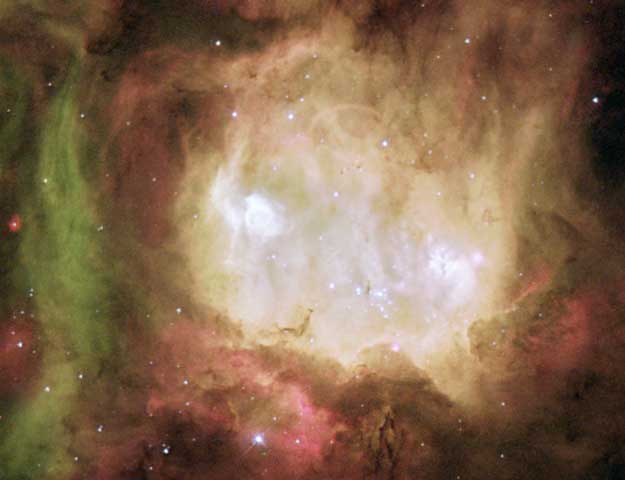
|
Explanation: Halloween's origin is ancient and astronomical. Since the fifth century BC, Halloween has been celebrated as a cross-quarter day, a day halfway between an equinox (equal day / equal night) and a solstice (minimum day / maximum night in the northern hemisphere). With our modern calendar, however, the real cross-quarter day will occur next week. Another cross-quarter day is Groundhog's Day. Halloween's modern celebration retains historic roots in dressing to scare away the spirits of the dead. A perhaps-fitting modern tribute to this ancient holiday is the above-pictured Ghost Head Nebula taken with the Hubble Space Telescope. Appearing similar to the icon of a fictional ghost, NGC 2080 is actually a star forming region in the Large Magellanic Cloud, a satellite galaxy of our own Milky Way Galaxy. The Ghost Head Nebula spans about 50 light-years and is shown in representative colors.
|
January February March April May June July August September October November December |
| ||||||||||||||||||||||||||||||||||||||||||||||||
NASA Web Site Statements, Warnings, and Disclaimers
NASA Official: Jay Norris. Specific rights apply.
A service of: LHEA at NASA / GSFC
& Michigan Tech. U.
Based on Astronomy Picture
Of the Day
Publications with keywords: LMC - NGC 2080 - Ghost Head Nebula
Publications with words: LMC - NGC 2080 - Ghost Head Nebula
See also:
